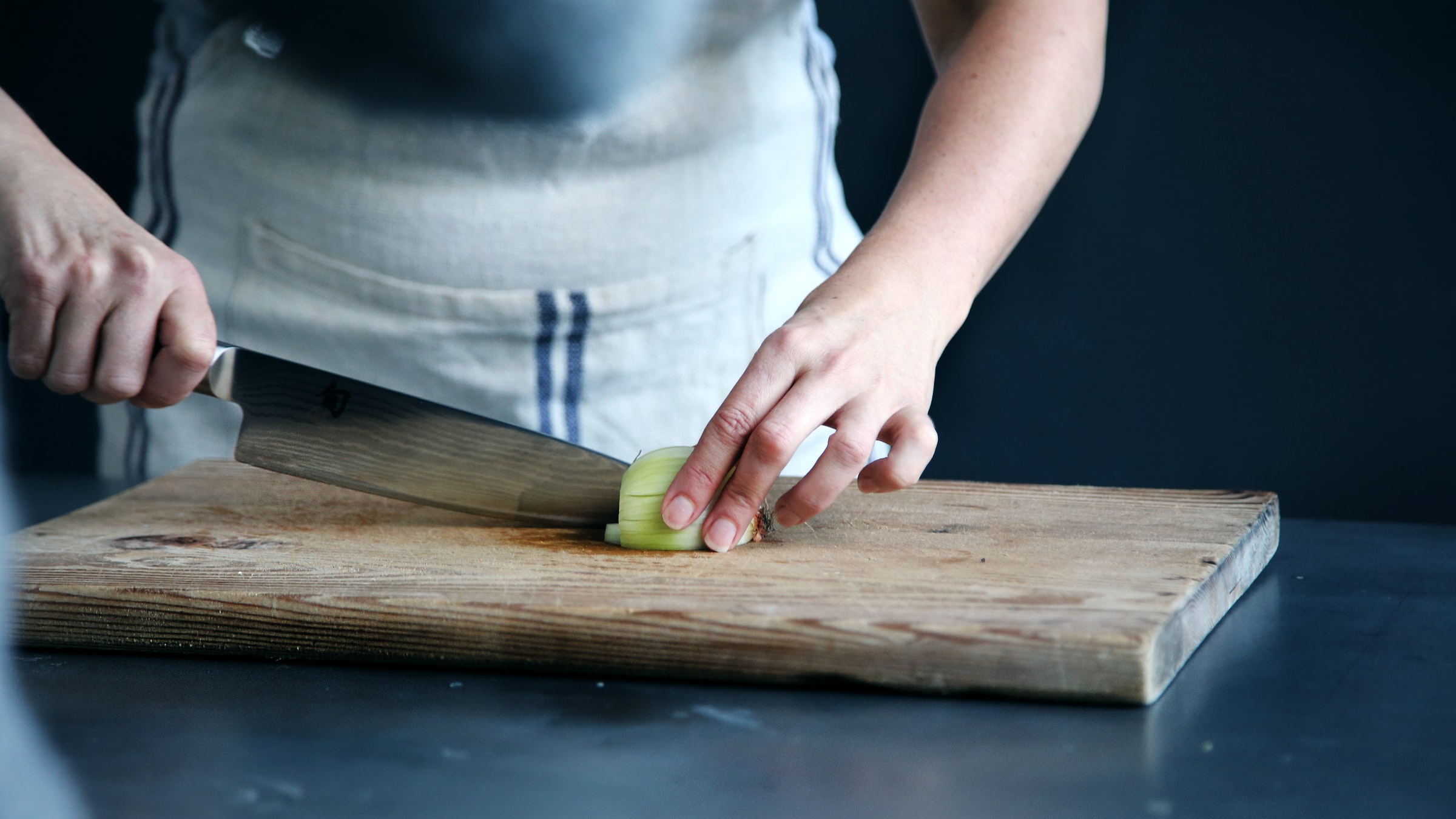How to Clean a Wooden Cutting Board
A cutting board is one of the key tools to food preparation. However, these boards need to be properly cleaned and maintained to prevent any food-borne illnesses. You should be cleaning your cutting board after every use even if it was used to slice a fruit. Skipping out on the cleaning can leave yeast and mold spores and bacteria that will continue to grow. It should also be disinfected at least monthly and after every use with raw meats, poultry and fish. Here’s how to keep your cutting board clean.
Rinse Often. After every use, rinse off the board under warm water. Use a sponge to remove any bits left behind. Try rinsing your board as soon as you can to prevent any staining.
Mix a Solution. Add a few drops of dishwashing liquid to warm water and wipe down both sides with a sponge. Don’t allow the wood board to soak in the solution. Never place the board in a dishwasher as the high heat and extended exposure to water will cause the wood to split.
Scrub Stains. If you notice any discoloration, sprinkle baking soda and use a dishwashing brush or half a lemon to scrub the area. The acid will boost the cleaning power and lighten any stains. Rinse the board with warm water to remove any residue and dry with a soft cloth or paper towel.
Disinfect. After you have rinsed the cutting board, spray it with distilled white vinegar. The acid in the vinegar acts as a disinfectant for daily use. You can also use a 3% solution of hydrogen peroxide. Whenever you work with raw meat, you should disinfect the board with a chlorine bleach and water solution. Mix one teaspoon of bleach in one quart of water and spread the solution on one side of the board. Let it sit for five minutes, then rinse with hot water and repeat on the other side.
Dry and Condition. Place the board in a drainer to air-dry completely. Never store a wooden board that is still wet. You can touch up the wood with food-grade, highly refined mineral oil. Apply a generous amount and spread evenly with a paper towel. Let it soak for a few hours or overnight. Repeat on the other side and let dry.
Source: the Spruce

